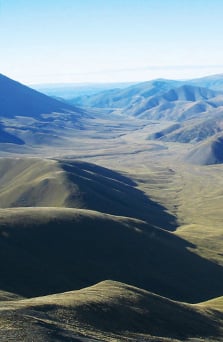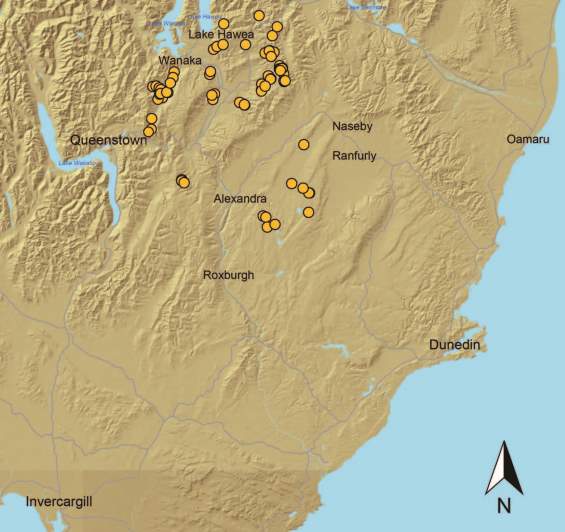Clutha flatheads are generally golden brown with darker flecks and splotches all over. They have a broad, flattened head and thick luscious lips.
Classified as ‘Nationally Critical’ they are one of our most endangered glaxaiids, sharing the same threat status as the kākāpō. Their total remaining habitat can fit in an area less than 12 hectares.
Image gallery
Habitat
Clutha flathead galaxias (Galaxias 'species D') are found in the upper tributaries of the Clutha River upstream of Roxburgh, and two tributaries of the Pool Burn.
They thrive in headwater streams and seepages that are small enough to step across and are surrounded by grasses and tussock.
Features
Features of Clutha flathead galaxias include:
- a broad, flattened head and thick luscious lips
- generally golden brown with darker markings in the form of flecks and splotches all over
- some display beautiful gold and orange dustings
- typically grow up to 100 mm in length but can get to 150 mm
- feed on small stream invertebrates such as mayflies and stoneflies
- difficult to spot as they hide in vegetation
- spawn in spring (October to November) laying tiny 2 mm eggs in stream vegetation or amongst stones
- can live up to 10 years.
This taxa is currently indeterminate and has not been formally described to date. Work is currently being undertaken to look into formal description.
Threats
Over the last decade, we have lost 35% of known Clutha flathead populations. This can be directly linked to the spread of sports fish (trout and brook char), which eat galaxiids.
Changes in land use is also a threat, such as stock access to streams, reduction of native vegetation, land development and forest harvesting.
These land use changes impact on the streams in which galaxiids live, increasing sedimentation, changing natural flows through water abstraction, and reducing the amount of habitat available for spawning.
Find out how you can help non-migratory galaxiids.
Distribution
This map shows the known locations of Clutha flathead galaxias, as at 2013.

Dunstan Creek, Otago: Clutha flathead galaxias habitat

Source: New Zealand freshwater fish database